Scientific Name: Tilia
Genus: Tilia
Family: Tiliaceae
Trees in this genus are called “basswoods” in North America and “lindens” in most other places. Whatever you call them, the trees are native to the U.S., Europe, and Asia. It is frequently difficult to tell the species apart, especially since they can hybridize. They all have the typical Tilia bloom: a cyme on a bract. These flowers are loved by honeybees.
American Basswood / Basswood
Scientific name: Tilia americana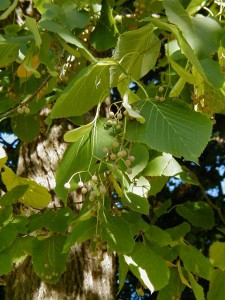
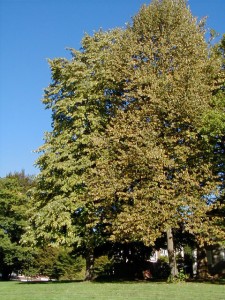 A deciduous native from New Brunswick to Virginia and west to Texas, the American basswood has small, fragrant, yellowish-white flowers in pendulous clusters suspended from bracts that bloom from June to July. This tree grows to 40-60 feet with a 20-25 foot spread. The trunk is straight and the foliage is dense. The leaves are huge compared to other lindens and they are bright green above and below.
A deciduous native from New Brunswick to Virginia and west to Texas, the American basswood has small, fragrant, yellowish-white flowers in pendulous clusters suspended from bracts that bloom from June to July. This tree grows to 40-60 feet with a 20-25 foot spread. The trunk is straight and the foliage is dense. The leaves are huge compared to other lindens and they are bright green above and below.
View tree page and map.Big Leaf Linden
Scientific name: Tilia platyphyllos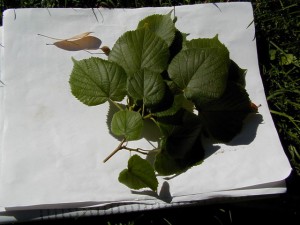
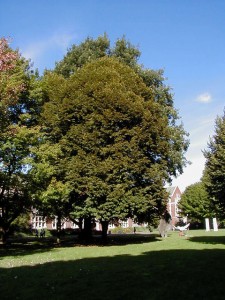 This is a deciduous tree with a dense compact crown. It has small, fragrant, yellowish-white flowers in drooping clusters. The leaves, from 2-5 inches long, are the largest of the European species. The Linden is often used for street and park planting in Europe and the United States.
This is a deciduous tree with a dense compact crown. It has small, fragrant, yellowish-white flowers in drooping clusters. The leaves, from 2-5 inches long, are the largest of the European species. The Linden is often used for street and park planting in Europe and the United States.
View tree page and map.Little Leaf Linden
Scientific name: Tilia cordata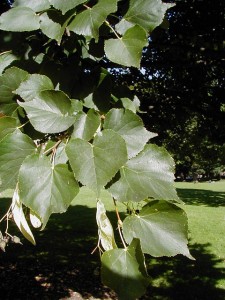
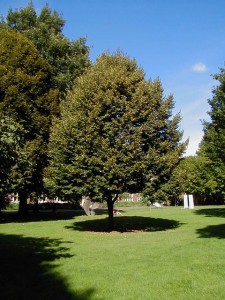 This deciduous tree grows slowly to 30-50 feet with a 15-30 feet spread in a dense pyramid shape. The leaves are dark green above and silvery-blue below with buff-orange tufts in the vein axils. It blooms in July and is very popular with honeybees. It is native to Europe but widely grown in Portland as a street tree. The specific name is derived from the leaf shape: like a heart.
This deciduous tree grows slowly to 30-50 feet with a 15-30 feet spread in a dense pyramid shape. The leaves are dark green above and silvery-blue below with buff-orange tufts in the vein axils. It blooms in July and is very popular with honeybees. It is native to Europe but widely grown in Portland as a street tree. The specific name is derived from the leaf shape: like a heart.
View tree page and map.